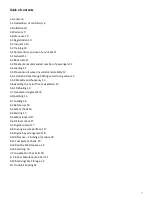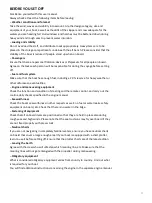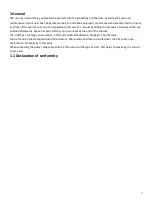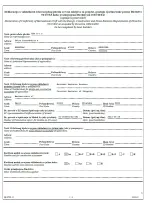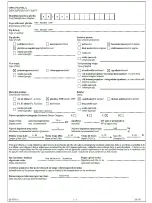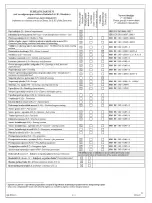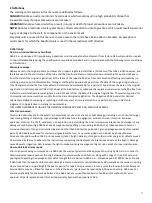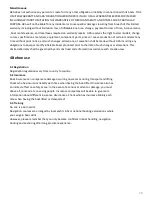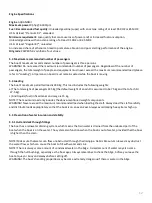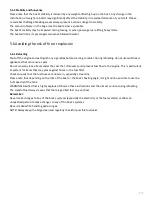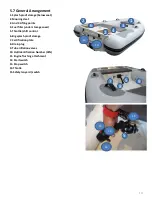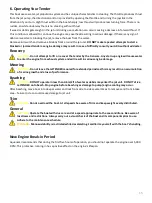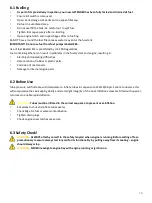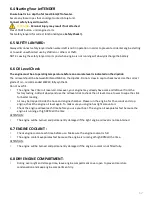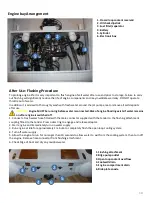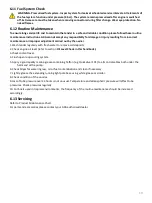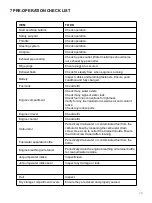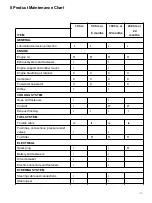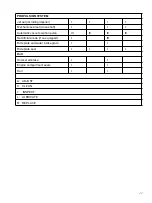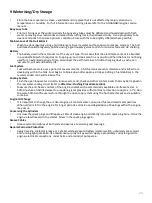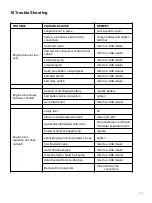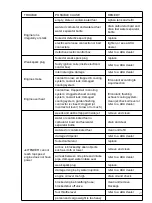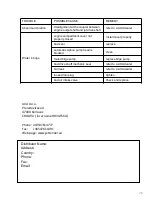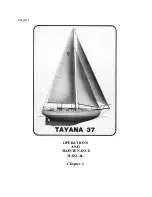
Engine Specifications
Engine
AQUANAMI
Maximum power
9,5hp @ 6300rpm
Fuel : Recommended fuel quality:
Unleaded gasoline (super) with an octane rating of at least 95 ROZ or 85 MOZ.
USA: At least “Premium 91”, unleaded
Minimum requirement:
Low-quality fuel can cause loss of power and/or increased fuel consumption.
Unleaded gasoline with an octane rating of at least 91 ROZ or 82.5 MOZ.
USA: At least “Regular 87”, unleaded
An increased share of ethanol can lead to premature abrasion and poor starting performance of the engine.
Oil grade
20W40 fully synthetic, four stroke
5.3 Maximum recommended number of passengers
The boat's maximum recommended number of passengers is three persons.
WARNING! Do not exceed the maximum recommended number of passengers. Regardless of the number of
passengers, the total weight of people and equipment must never exceed the maximum recommended load (please
refer to “Loading”). All
persons on board must remain seated while the boat is moving.
5.4 Loading
The boat's maximum permitted load is 240 kg. This load includes the following weights:
a) The total weight of passengers 225 kg (the default weight of an adult is assumed to be 75 kg and that of a child
37.5 kg).
c) And liquids (fuel) in fixed tanks and cargo is 15 kg.
NOTE! The maximum load only includes the above-mentioned weight components.
WARNING! Never exceed the maximum recommended load when loading the craft. Always load the craft carefully
and distribute loads appropriately so that the boat is on an even keel. Always avoid placing heavy items high up.
5.5 Prevention of water incursion and stability
5.5.1 Hull and deck through fittings
The boat has a rainwater draining system, which means that rainwater is drained from theundecked part of the
boat when the boat is on the water. The system also functions when the boat is out of water, provided that the bow
is higher than the stern.
NOTE! Make sure that water can flow unobstructed through the drainpipe. Debris like autumn leaves may obstruct
the water flow, which can cause the boat to fill with water and sink.
NOTE! There is always some amount of condensed water in the bilge. A small amount of water may also come
through the hull bushings, especially as the boat ages. Always remember to check the bilge, before you leave the
boat at quay or buoy and always before setting off.
WARNING! The boat's handling properties may become extremely dangerous if there is water in the bilge.
12
Summary of Contents for JetTENDER 250
Page 1: ...JetTENDER 250 User Manual 1...
Page 6: ...6...
Page 7: ...7...
Page 8: ...8...
Page 27: ...27...



